The Met Presents Paul Rudolph
A Legacy of Architectural Innovation
Exhibition Dates:
September 30, 2024–March 16, 2025
The Met
New York, NY
Prepare to be captivated by Materialized Space: The Architecture of Paul Rudolph, a groundbreaking exhibition at The Metropolitan Museum of Art that shines a long-overdue spotlight on one of the most influential yet underappreciated architects of the 20th century. Opening September 30, 2024, this retrospective traces the complex, visionary career of Paul Rudolph, whose radical ideas shaped modern architecture and urban design. From private residences and civic structures to sweeping utopian megastructures, Rudolph's work continues to inspire, challenge, and influence architects worldwide.
A Visionary Architect Redefined
EGW Luxury Magazine Fall/Winter 2024
Paul Rudolph’s name might not instantly ring out like his contemporaries—Eero Saarinen or I.M. Pei—but his architectural footprint is no less impactful. Born in 1918, Rudolph rose to prominence in the 1950s and 60s, the height of Modernism, blending audacity with meticulous precision. He is best known for his brave use of Brutalism, an architectural style defined by raw, unfinished materials like concrete, and for his innovative approach to space.
The exhibition is a rare opportunity to journey through the intricate layers of Rudolph’s work, a body of art that refuses to be boxed into one aesthetic or function. As you move through The Met’s Helen and Milton A. Kimmelman Gallery, you will witness the full spectrum of Rudolph’s genius—from his experimental, sun-drenched houses in Florida to his imposing civic commissions and unrealized urban visions.
Yale’s Monumental Art and Architecture Building
One of the crown jewels of this exhibition is Rudolph’s iconic Art and Architecture Building at Yale, a towering statement in Brutalism that has both fascinated and polarized audiences since its completion in 1963. The concrete behemoth—both sculptural and functional—embodied Rudolph’s belief that buildings should evoke emotion, controversy, and conversation. As one of the most challenging structures to navigate, it stands as a testament to Rudolph’s unique view of architecture as a visceral experience.
Immersive Interiors and Utopian Megastructures
The exhibition does not stop at buildings. It dives deep into Rudolph’s visionary utopian megastructures, projects that, while never fully realized, pushed the boundaries of urban design. His audacious Lower Manhattan Expressway proposal is particularly notable, offering a glimpse into what might have been if Rudolph’s vision for a Y-shaped corridor linking New Jersey to Brooklyn had come to fruition. His designs were not merely architectural; they were blueprints for living cities where transportation would unify rather than divide communities.
On the smaller scale, his immersive interiors—like the sumptuous townhome he designed for fashion icon Halston—offer a contrasting view of Rudolph’s artistry. Here, his sensitivity to space, light, and texture came to life in a way that embraced elegance without losing the boldness of his architectural voice.
The Brutalist Debate
While Rudolph’s career saw tremendous highs, his use of Brutalism led to periods of public controversy, particularly as tastes changed in the 1970s. Brutalism, which once symbolized post-war innovation and strength, became associated with cold, harsh environments, leading to the demolition of several of his masterpieces in recent decades. The exhibition invites viewers to reconsider Brutalism, not just as a style, but as a radical response to a specific time in history—one that still echoes in debates over urban renewal and architectural preservation today.
A Master of Architectural Drawing
A defining feature of Materialized Space is the attention given to Rudolph’s extraordinary hand-drawn architectural renderings. Long before the advent of digital design tools, Rudolph’s intricate sketches served as both functional blueprints and works of art in their own right. His drawings, many of which have never been exhibited before, offer insight into his creative process, underscoring the primacy of drawing in architectural innovation.
These renderings are more than static plans; they are dynamic visions that seem to breathe life into the spaces they depict. Though technology has transformed the way architects work today, Rudolph’s handmade drawings remain critical tools for understanding how architecture can evolve from an idea to an immersive experience.
A Living Legacy
Materialized Space is more than an homage to the past—it is a dialogue with the future. The exhibition not only reintroduces Paul Rudolph to contemporary audiences but also highlights how his ideas continue to influence today’s architects and city planners. From Asia to New York, the echoes of his visionary work resonate in the ongoing conversation around urban renewal, housing policy, and community-centered design.
Visitors to the exhibition will encounter over 80 objects, from furniture and material samples to personal collections, offering a window into Rudolph’s multifaceted life and career. In partnership with the Library of Congress’s Paul Marvin Rudolph Archive, The Met brings together an extraordinary selection of works, many never before seen, that will challenge and expand your understanding of what modern architecture can achieve.
A Celebration of Innovation
Curated by Abraham Thomas, The Met’s Daniel Brodsky Curator of Modern Architecture, Design, and Decorative Arts, this exhibition is a once-in-a-lifetime opportunity to explore the depth and breadth of Paul Rudolph’s architectural contributions. From post-war expansion to the economic booms of the 1980s, Materialized Space follows Rudolph’s career across decades, continents, and styles, culminating in a celebration of an architect who consistently pushed boundaries, refusing to be categorized or constrained by convention.
Plan Your Visit
Materialized Space: The Architecture of Paul Rudolph runs from September 30, 2024, through March 16, 2025, at The Met Fifth Avenue, in the Lila Acheson Wallace Wing. Admission is free with museum entry, offering a chance to immerse yourself in this unforgettable journey through the mind of a modernist master.
For more information, visit The Met and follow The Met’s social media channels on Instagram.

Paul Rudolph (American, 1918-1997) Architectural model for the proposed Sino Tower (unbuilt), Hong Kong 1989 Balsa wood and plastic 48 x 34 1/4 x 25 in. (131.7 x 63.2 cm) Prints and Photographs Division, Library of Congress. Photograph by Eileen Travell.

Temple Street Parking Garage, New Haven, Connecticut 1962 Photograph by Ezra Stoller Photograph © Ezra Stoller/Esto, Yossi Milo Gallery

Paul Rudolph (American, 1918-1997) Perspective section drawing of the Lower Manhattan Expressway / City Corridor project (unbuilt), New York 1972 Ink and graphite on paper 40 x 33 1/2 in. (101.6 x 85.1 cm) The Museum of Modern Art, New York, Gift of the Howard Gilman Foundation (1290.2000)

Paul Rudolph (American, 1918-1997) Rolling Dining Chair Designed 1968 Lucite, chromium plated tubular steel 30 h × 28 1/4 w × 24 d in (76 × 72 × 61 cm) Paul Rudolph Institute for Modern Architecture. Photograph by Eileen Travell

Paul Rudolph (American, 1918-1997) Perspective section drawing of the Art and Architecture Building, Yale University, New Haven 1958 Pen and ink, graphite, and plastic film with halftone pattern, on illustration board 36 7/8 x 53 5/8 x 2 in. (93.6 x 136.2 x 5.1 cm) School of Architecture, Yale University, Manuscripts and Archives, Yale University Library.

Walker Guest House, Sanibel Island, Florida 1952 Photograph by Ezra Stoller for House Beautiful Photograph © Ezra Stoller/Esto, Yossi Milo Gallery

Paul Rudolph (American, 1918-1997) Perspective drawing of the Lower Manhattan Expressway / City Corridor project (unbuilt), New York ca. 1967–72 Ink on tracing paper 21 1/2 x 30 in. (54.6 x 76.2 cm) Prints and Photographs Division, Library of Congress

Paul Rudolph (American, 1918-1997) Interior perspective of Tuskegee Institute Chapel (now Tuskeegee University), Tuskeegee Alabama ca. 1960 Colored pencil over sepia print 37 3/8 x 29 3/8 in. (95 x 74.6 cm) Prints and Photographs Division, Library of Congress

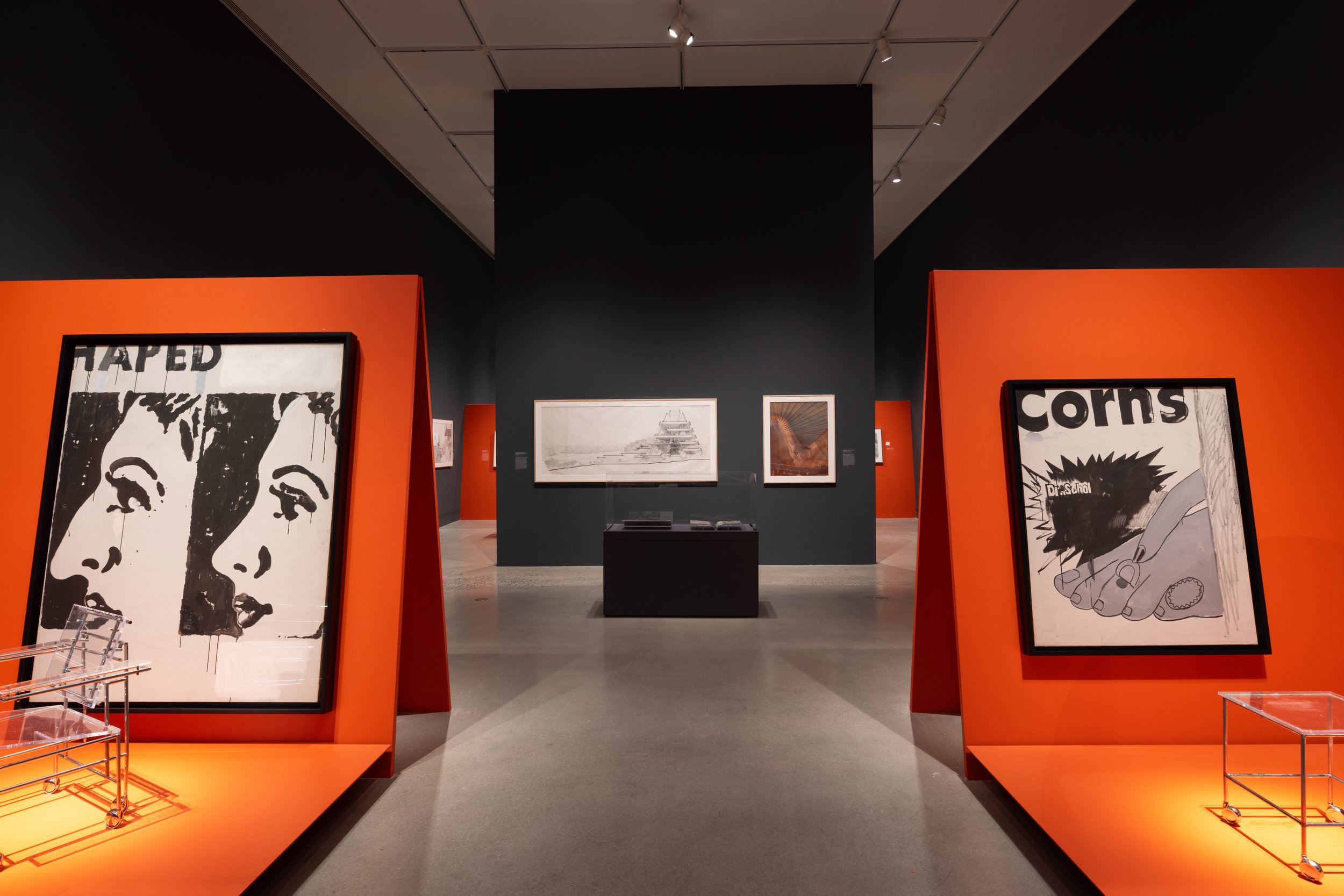



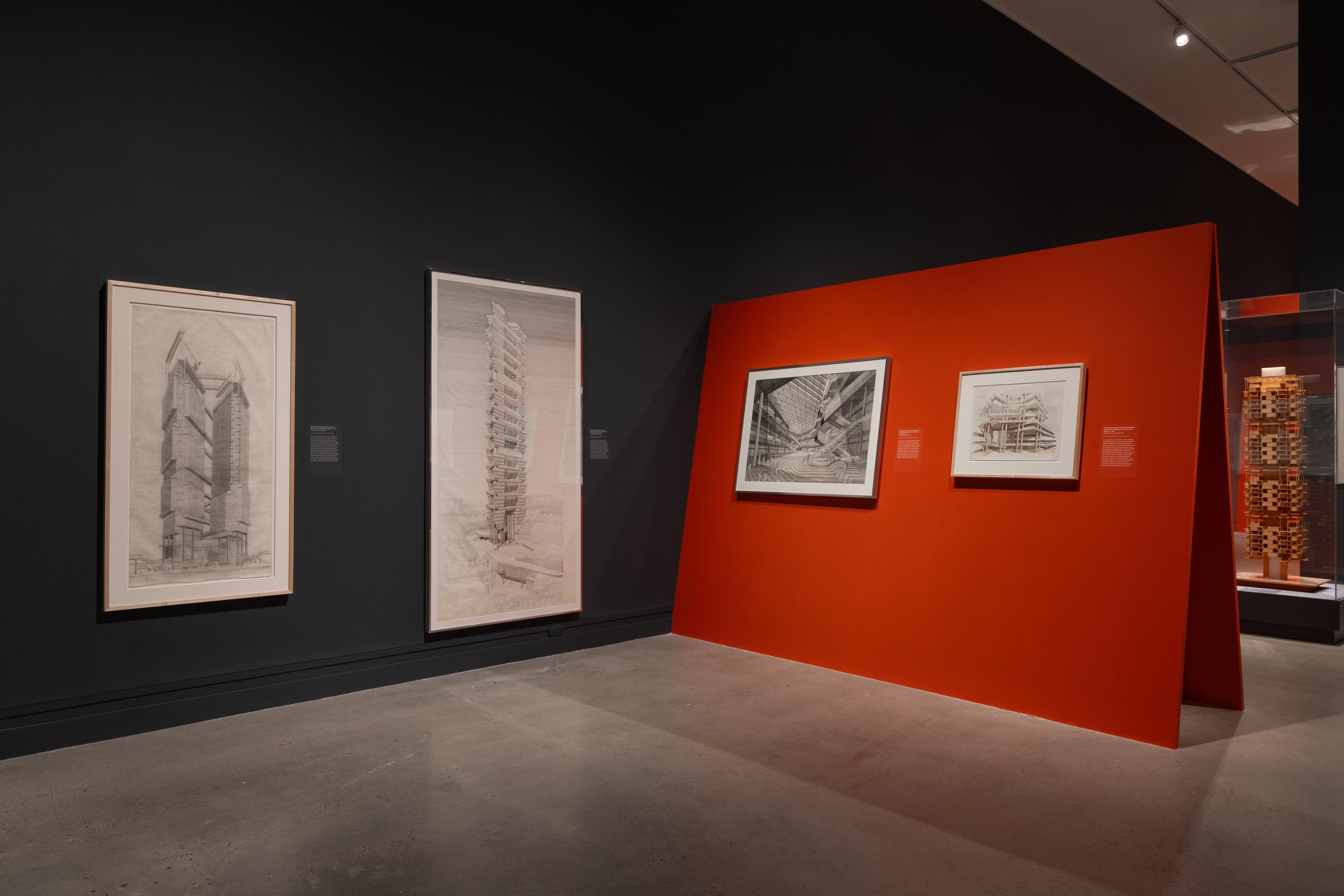

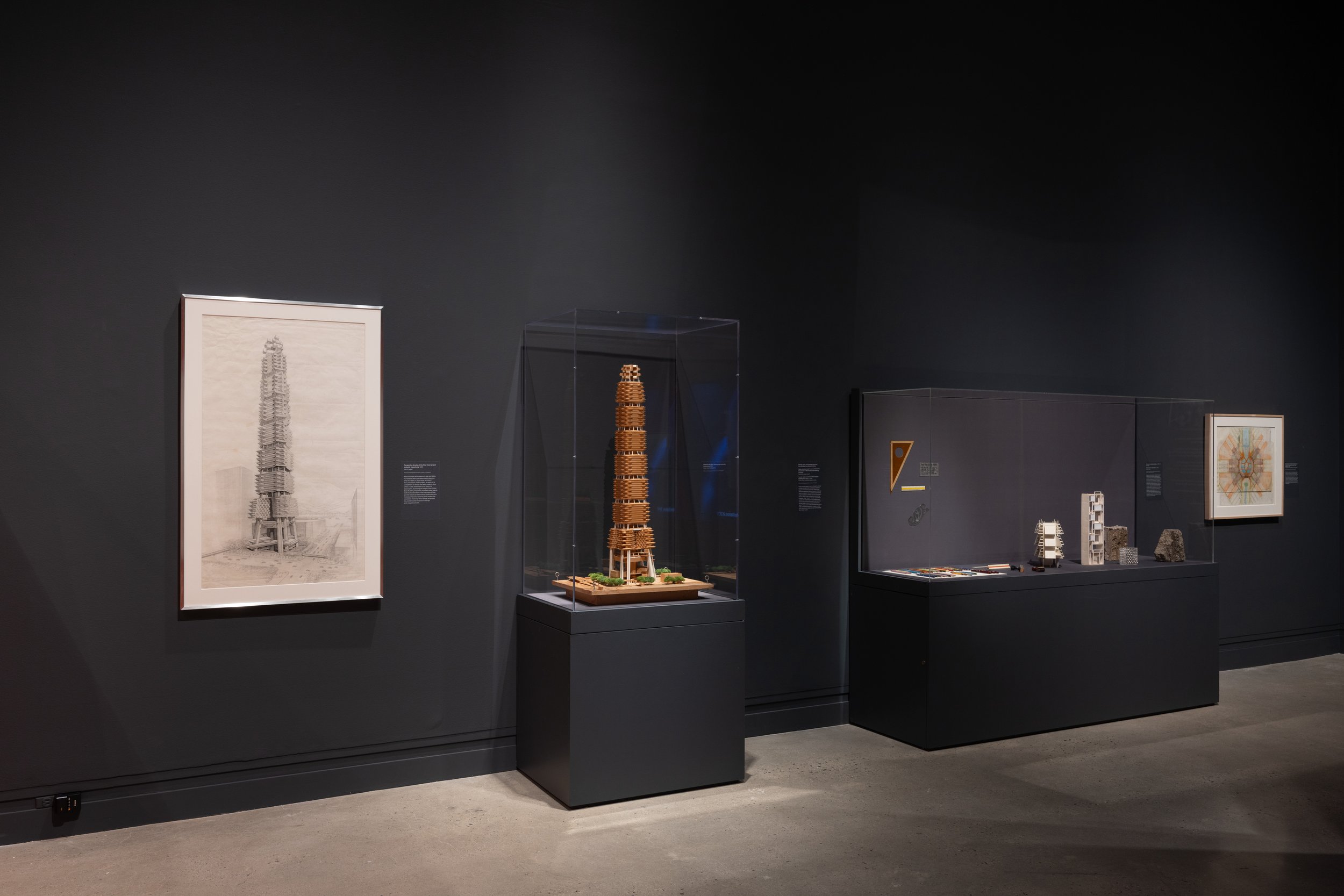

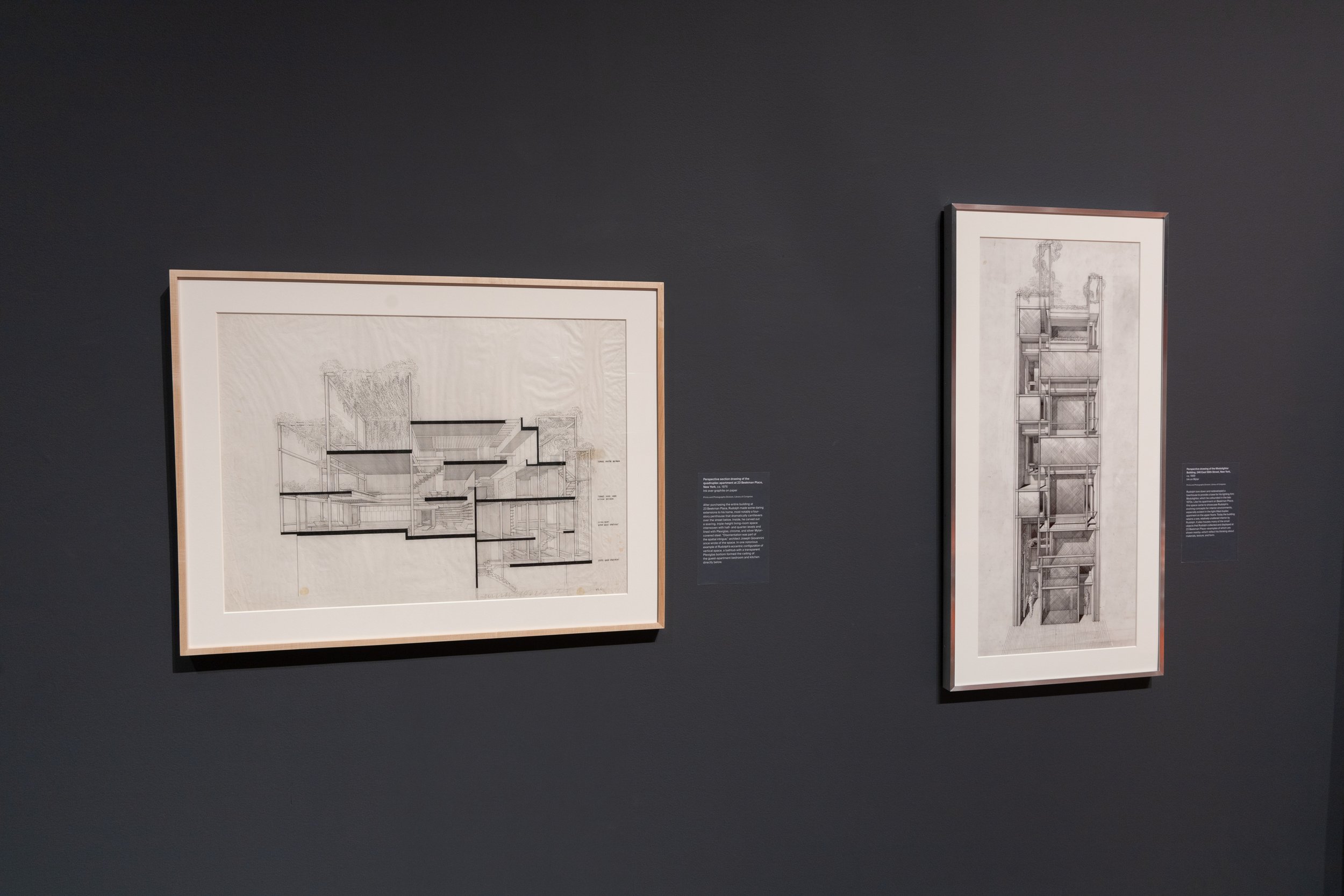
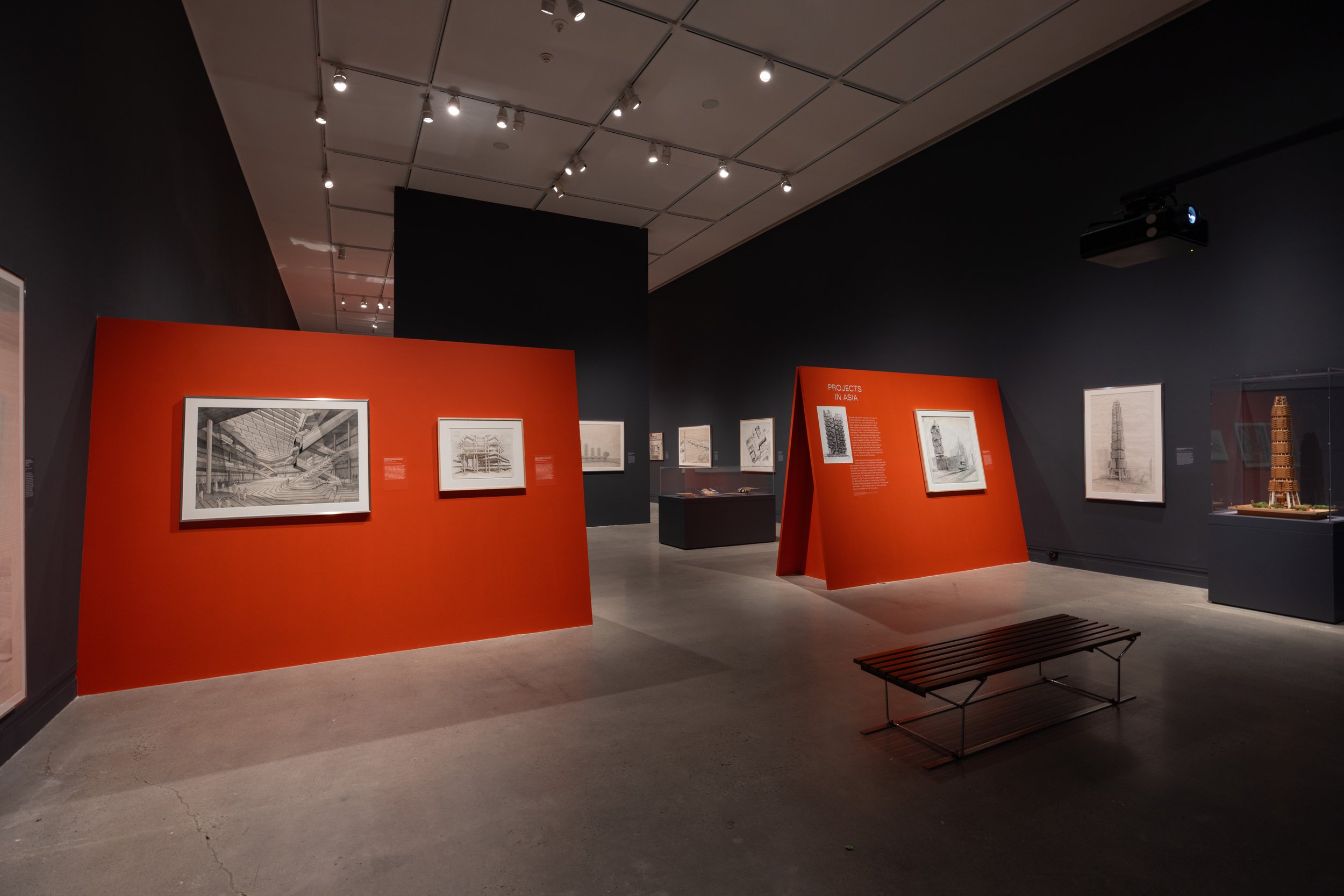




Photo's Courtesy of THE MET Exhibition Dates: September 30, 2024–March 16, 2025



